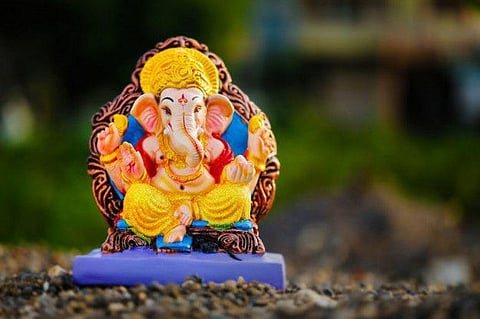The Durva grass has long been used in Hindu rituals, especially by those who worship Lord Ganesha. Durva means "which is cut or eaten by animals" in Sanskrit. The Rig Veda and the Atharvana Veda mention the Durva grass. In the Bhavishya Purana, Durva is stated to have appeared from Lord Vishnu's hands and thighs as he bolstered Mt. Mandara during the Samudra Manthan. Moreover, in the Vamana Purana, Durva surfaced from the tail of Vasuki, the snake used to churn the Ocean during the same Manthana.


